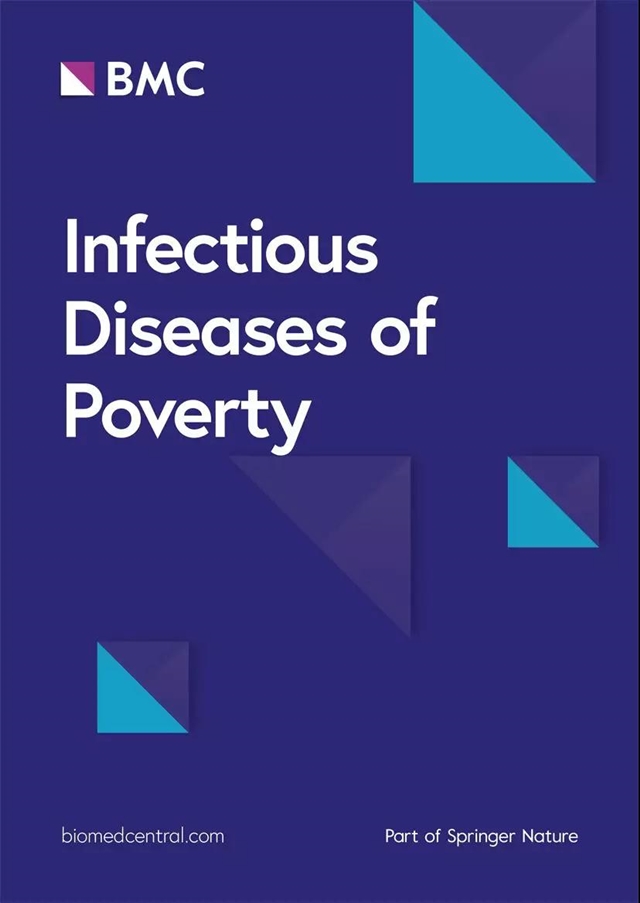The coverage and challenges of increasing uptake of non-National Immunization Program vaccines in China: a scoping review
IF 5.5
1区 医学
Q1 INFECTIOUS DISEASES
引用次数: 0
Abstract
Non-National Immunization Program (NIP) vaccines have played an important role in controlling vaccine-preventable diseases (VPDs) in China. However, these vaccines are paid out of pocket and there is room to increase their coverage. We focused on four selected non-NIP vaccines in this study, namely Haemophilus influenzae type b (Hib) vaccine, human papillomavirus (HPV) vaccine, pneumococcal conjugate vaccine (PCV), and rotavirus vaccine. We aimed to conduct a scoping review of their vaccination rates and the major barriers faced by health systems, providers, and caregivers to increase coverage. We followed the Preferred Reporting Items for Systematic Reviews and Meta-Analyses Extension for Scoping Reviews (PRISMA-ScR). We searched five English databases (PubMed, Web of Science, EMBASE, Scopus, and WHO IRIS) and four Chinese databases using the search strategy developed by the study team. Two independent reviewers screened, selected studies, and examined their quality. We summarized the non-NIP vaccine coverage data by vaccine and applied the 5A framework (Access, Affordability, Acceptance, Awareness, Activation) to chart and analyze barriers to increasing coverage. A total of 28 articles were included in the analysis (nine pertaining to vaccine coverage, and another 19 reporting challenges of increasing uptake). Among the four selected vaccines, coverage for the Hib vaccine was the highest (54.9–55.9% for 1 dose or more from two meta-analyses) in 2016, while the coverage of the other three vaccines was lower than 30%. Eight of the nine included articles mentioned the regional disparity of coverage, which was lower in under-developing regions. For example, the three-dose Hib vaccination rate in eastern provinces was 38.1%, whereas the rate in central and western provinces was 34.3% and 26.2%, respectively in 2017. Within the 5A framework, acceptance, awareness, and affordability stood out as the most prominent themes. Among the 12 identified sub-themes, high prices, low vaccine awareness, concerns about vaccine safety and efficacy were the most cited barriers to increasing the uptake. There is an urgent need to increase coverage of non-NIP vaccines and reduce disparities in access to these vaccines across regions. Concerted efforts from the government, the public, and society are required to tackle the barriers and challenges identified in this study, both on the demand and supply side, to ensure everybody has equal access to life-saving vaccines in China. Particularly, the government should take a prudent approach to gradually incorporate non-NIP vaccines into the NIP step by step, and make a prioritizing strategy based on key factors such as disease burden, financial resources, and market readiness, with special attention to high-risk populations and underdeveloped regions.中国提高非国家免疫规划疫苗接种率的覆盖面和挑战:范围界定综述
在中国,非国家免疫规划(NIP)疫苗在控制疫苗可预防疾病(VPDs)方面发挥了重要作用。然而,这些疫苗都是自费疫苗,其覆盖率还有待提高。在本研究中,我们重点关注了四种选定的非国家免疫规划疫苗,即乙型流感嗜血杆菌(Hib)疫苗、人乳头瘤病毒(HPV)疫苗、肺炎球菌结合疫苗(PCV)和轮状病毒疫苗。我们旨在对这些疫苗的接种率以及医疗系统、医疗服务提供者和护理人员在提高接种率方面所面临的主要障碍进行一次范围审查。我们遵循了 "系统综述和荟萃分析的首选报告项目"(Preferred Reporting Items for Systematic Reviews and Meta-Analyses Extension for Scoping Reviews,PRISMA-ScR)。我们使用研究小组制定的检索策略检索了五个英文数据库(PubMed、Web of Science、EMBASE、Scopus 和 WHO IRIS)和四个中文数据库。两位独立审稿人对研究进行了筛选,并检查了研究质量。我们总结了按疫苗分类的非 NIP 疫苗覆盖率数据,并应用 5A 框架(可获得性、可负担性、可接受性、可认知性、可激活性)绘制和分析了提高覆盖率的障碍。共有 28 篇文章被纳入分析(其中 9 篇与疫苗覆盖率有关,另外 19 篇报告了提高疫苗接种率所面临的挑战)。在所选的四种疫苗中,2016 年乙型流感嗜血杆菌疫苗的覆盖率最高(根据两项荟萃分析,1 剂或以上疫苗的覆盖率为 54.9%-55.9%),而其他三种疫苗的覆盖率均低于 30%。在收录的9篇文章中,有8篇提到了覆盖率的地区差异,欠发达地区的覆盖率较低。例如,2017 年东部省份的三针 Hib 疫苗接种率为 38.1%,而中部和西部省份的接种率分别为 34.3% 和 26.2%。在 5A 框架内,接受度、认知度和可负担性是最突出的主题。在已确定的 12 个次主题中,价格高、疫苗认知度低、对疫苗安全性和有效性的担忧是提高疫苗接种率的最大障碍。当务之急是扩大非国家免疫计划疫苗的覆盖面,缩小各地区在获得这些疫苗方面的差距。政府、公众和社会需要共同努力,从供需两方面解决本研究中发现的障碍和挑战,以确保在中国每个人都能平等地接种救命疫苗。尤其是,政府应采取审慎的态度,逐步将非国家免疫规划疫苗纳入国家免疫规划,并根据疾病负担、财政资源和市场准备程度等关键因素制定优先策略,特别关注高危人群和欠发达地区。
本文章由计算机程序翻译,如有差异,请以英文原文为准。
求助全文
约1分钟内获得全文
求助全文
来源期刊

Infectious Diseases of Poverty
Medicine-Public Health, Environmental and Occupational Health
CiteScore
16.70
自引率
1.20%
发文量
368
审稿时长
13 weeks
期刊介绍:
Infectious Diseases of Poverty is a peer-reviewed, open access journal that focuses on essential public health questions related to infectious diseases of poverty. It covers a wide range of topics and methods, including the biology of pathogens and vectors, diagnosis and detection, treatment and case management, epidemiology and modeling, zoonotic hosts and animal reservoirs, control strategies and implementation, new technologies, and their application.
The journal also explores the impact of transdisciplinary or multisectoral approaches on health systems, ecohealth, environmental management, and innovative technologies. It aims to provide a platform for the exchange of research and ideas that can contribute to the improvement of public health in resource-limited settings.
In summary, Infectious Diseases of Poverty aims to address the urgent challenges posed by infectious diseases in impoverished populations. By publishing high-quality research in various areas, the journal seeks to advance our understanding of these diseases and contribute to the development of effective strategies for prevention, diagnosis, and treatment.
 求助内容:
求助内容: 应助结果提醒方式:
应助结果提醒方式:


